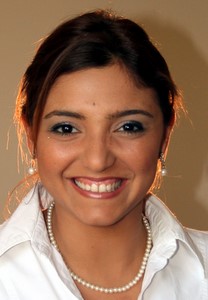11:00 AM
This morning I set myself to explore some technologies to support the upcoming OLnet virtual workshops. The OU itself offers a number of them, such as Cloudworks, Cohere and FM. These are great tools that have been used successfully by a growing number of people worldwide. Nevertheless it’s important for us to keep an eye on what else the world finds interesting, and try to understand how best to make use of these tools for community enabling and to support our research purposes. In less than half an hour of what I would call a ‘very modest’ exploration, within my own social networking links, I found out three new tools. This time I didn’t even have the luxury of doing a Google search! I realised that in order to keep up with the technology available out there I would have to keep both eyes on it and not only one (excuse my Brazilian irony, I hope it makes sense lol). Just by reading some colleagues’ twitter messages and blog posts, as well as by looking at the technologies they use, I found out this whole new universe in front of me, that if I were to seriously explore, it would take at the very least the rest of my day time. Most immediately after this realisation and a quick look at the clock, I gave up searching for new technology and decided to think about how to make the best use of the tools that I already know. But is this the best option? I wondered. Maybe yes, I could get things done timely and effectively! Maybe not…. I could be missing out on better ways of doing things… and I would also be missing on the innovation side of things… the buzz tools, the buzz words, the DIM DIM, the DIGG, the Wave….
What a struggle. I concluded. And this is because I am not the most dummy of the persons when technology is concerned. Ok, I am more of an educationalist than a technologist, but even though… Perhaps the problem is not so much on ‘how’ to use the tools (at least for me), the problem nowadays is that there’s too much out there. It’s a Technology Empire.
Not that it’s necessarily a bad thing, excuse me the techie ones :-) But that this infinity of options can be rather blurring, distracting and time consuming, oh yes it can. And when it comes to OER design, use and re-use, do people actually have that much time to spend on shopping around the options? In fact, perhaps one of the biggest appeals nowadays about shopping around for technology is that it’s free: you can download and play as much as you want with the tools without digging a hole in your pocket. And pardon my rather naive comparison, but I wish make-up and shoes were available in the shops and free in the the same way … ;-)
Now, seriously, how on earth can we expect people to get grips with all that is around (even if it means two or three tools) and still produce wonderful reusable open content materials? And come up with great expertise and stories of success they can share with the world? And convince their institutions, colleagues and students that OER is a really cool thing to do? In most of the interviews with users I conducted for the past three years (teachers and general practitioners) they say something like this: “I love this technology, I really do. I think it is clever and could be really useful. But I sincerely do not have the time to invest in learning how to use it.” And they not rarely add “There’s a sea of options out there, I do not know what to choose and I do not even know where to get started. It’s a pity but it’s reality”. They are not alone. What to say next?
I still do not have a conclusion for my technology matter. It seems I am going round in circles, both counciously trying to get out of the technology trap (I like your term ‘trap’ Patrick) at the same time fascinated by the options these digital era gives me. And to give you an insider view, potential virtual workshop participants seem to prefer to use their own technology (they also develop cool things in their countries, you know?). So I wrote to my colleagues on Facebook, Twitter, Ning, Orkut, MySpace, Skype and Messenger (have I forgotten anything?) and asked for their help; I asked them to suggest me some interesting virtual learning environments and social networking websites that could make great mediation tools to our virtual workshops, something they would like to use. Some of them sent me some total unfamiliar (to me of course), really cool stuff they say, something we could never do without, all open source…. I must try them out… mustn’t I?
I need an aggregator, now I got it! I finally got the inspiration I was after, it only took me a blog post and it came my way. I am off to look for one now. Hum? The virtual workshops? The OER stuff? I think they can wait a little longer, I have something more important to do right now…
Filed under: Open Educational Resources | Tagged: OER, OER tools, OLnet, virtual workshops | Leave a comment »


